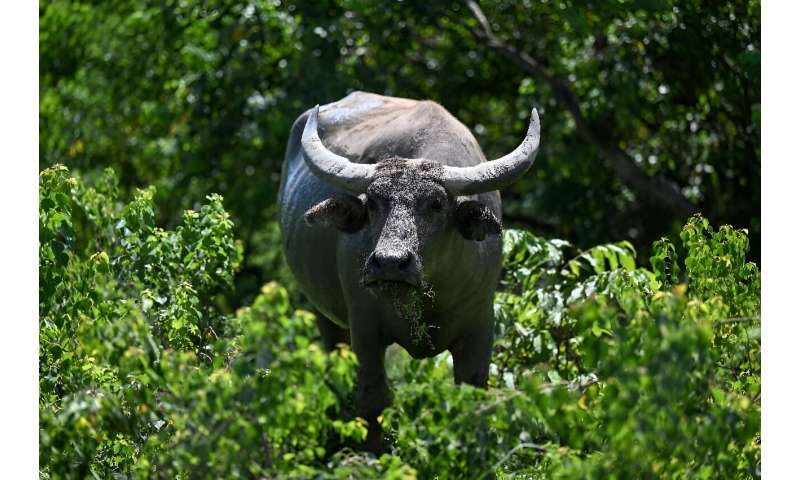
Microplastic particles turned up in the vast majority of waste samples taken from Hong Kong wildlife in a Greenpeace study, the group said Monday, suggesting that animals still ingest plastics even if they are not feeding in urban areas.
The scale of the issue is vast—microplastics have been found in the deepest ocean trenches, on the highest mountain peaks, in the atmosphere, and even in breastmilk.
Though best known as a city of skyscrapers, Hong Kong is also home to huge swathes of undeveloped countryside home to animals like buffalo, boars, wild cattle, macaques and porcupines—the species included in the Greenpeace survey.
The group, alongside researchers from local and Taiwanese universities, collected 100 feces samples from seven locations in 2022, and found 85 percent of them contained microplastics, Greenpeace said in a press release.
Hong Kong, a city of 7.5 million people, sends more than 2,300 tonnes of plastic waste to landfills every day, according to the government’s 2022 waste report.